Believe it or not, the first thing you add to your brand new aquarium isn’t water.
That honor goes to the substrate.
Sub…what?
I’ll answer that and more in my beginner’s guide to aquarium substrate!
Contents
What is a substrate?
You actually already know what a substrate is. You just don’t call it by that name…
When it comes to aquariums, the substrate refers to any loose material that makes up the bottom of your tank.
You know those pebbles at the bottom of your aquarium?
Well, that’s the substrate.
Pretty simple, huh?
It doesn’t have to be pebbles. It can be anything. If it’s loose and covers the bottom of your aquarium, it’s a substrate.
Why do aquariums have a substrate?
Below are the most common reasons why a substrate is used in aquariums…
1. Good looking – Let’s be realistic. The main reason people use a substrate is because it enhances the look of the aquarium.
2. It’s natural – Do fish in the wild have a glass-bottomed habitat? No. By using a substrate, you are creating a more natural environment for your fish.
3. Enhances your fish – You can use the substrate to make your fish pop. Dark fish are easier to see on a light-colored substrate while light-colored fish are easier to see on a dark substrate.
4. It houses bacteria – You know those beneficial bacteria that take part in the nitrogen cycle? While the majority of them live in your filter, some also cover the substrate of your aquarium. In fact, you can use the substrate from an established tank to make your brand new aquarium cycle faster
5. Plants need it – Plant roots need to go somewhere. Without a substrate, your plants will float to the top of your tank.
As you see, there are some pretty compelling reasons to use a substrate in your aquarium.
What are the different types of substrate?
Variety is the spice of life! And when it comes to your substrate, you have plenty of options to choose from.
Let’s look at the more commonly used substrates…
Pebbles
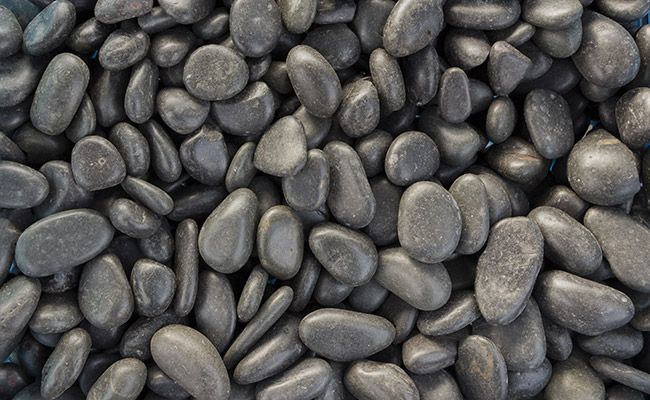
The largest type of substrate used. Pebbles range in size from 6mm all the way up to 64mm.
Pebbles can be made from almost any material that you can imagine – river rock, quartz, glass, and even colored plastic that glows in the dark. If the material does not impact the water quality, you can bet there is a pebble made from it.
I personally don’t recommend pebbles as a substrate. When layered, large gaps are left between each pebble.
On their own, these gaps are not a problem. But over time, uneaten food and poop will fall between these gaps and build up.
Not only does this look ugly, but it also provides a feast for bacteria that produce nitrites, which are toxic to your fish.
Also, due to the large gaps, plants have difficulty rooting in a pebble substrate.
For beginners, if you want a rocky substrate, I recommend skipping pebbles and using…
Gravel

You can think of gravel as small pea-sized pebbles. Measuring between 2mm and 5mm, gravel has a similar look to pebbles without the downside.
Just like pebbles, gravel is available in a wide range of materials, allowing you to achieve nearly any substrate design that you can imagine.
Because the gaps around each pebble are smaller, food and poop cannot fall as far. Any food that lands on gravel can be easily removed with a gravel vac during maintenance.
Sand
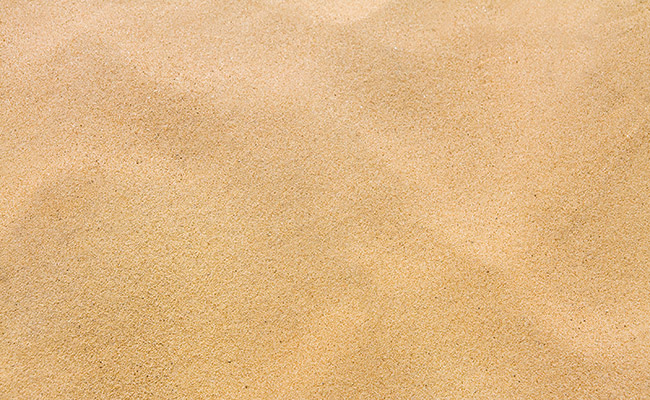
Ever stepped foot on a beach? Well, the sand used in an aquarium substrate is no different.
Available in a range of grain sizes, from coarse to fine, and a wide range of colors, sand is also a popular substrate.
Sand is considered the most natural substrate since most aquarium fish are from an environment that has sand, silt or mud – all of which sand accurately replicates.
Sand also has little to no gaps between each grain, meaning nowhere for uneaten food and poop to get stuck – making sand one of the easiest substrates to keep clean.
Soil

Ever mixed soil and water together?
You get muddy water.
There are two problems with muddy water:
- You can’t see your fish or anything else in your tank.
- The muddy water can cause your fish stress.
So, as you might have guessed, soil used as an aquarium substrate is a little different.
Substrate soil from your local fish store is specially formulated to prevent it from mixing with water while also providing the nutrients necessary for your plants to grow.
Soil is specifically used in planted tanks. If you do not plan on growing live plants in your tank, then you should use a different substrate. Besides, if you are just using soil because of the color, then you will be pleased to know that pebbles, gravel and sand are all available in varying shades of brown.
FishLab Tip: You may have noticed that many of these substrate materials, such as pebbles and soil, can be found in your garden.
However, unless you know what you are doing, you should only add store-bought substrates to your aquarium. These products have been tested and treated to ensure they are safe for your aquarium.
The stuff in your garden? Well, that could introduce bacteria, dust, chemicals and other nasties that could kill your fish. Play it safe and stick to store-bought substrates.
Water-changing substrates
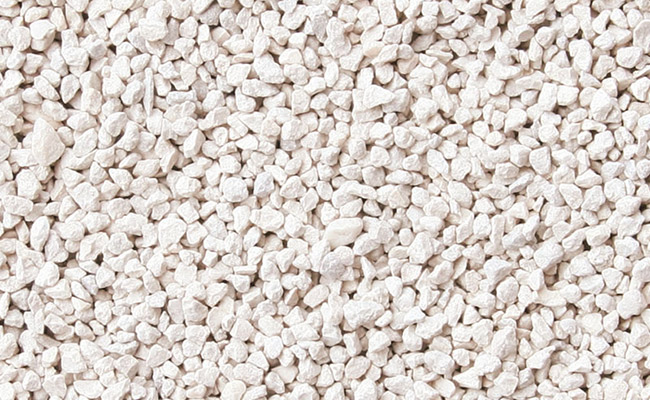
Up to this point, all the substrates I mentioned have been inert. What this essentially means is that the material will not change the quality or chemistry of the water.
Generally speaking, if you unintentionally add a substrate into your aquarium that changes the water, you are going to have a bad time. Using play sand as a substrate, for instance, can introduce silicates into your water, which can then lead to an outbreak of brown algae.
However, when intentionally used, there are certain substrates that make maintaining your aquarium a much easier task.
These substrate materials include:
- Aragonite – Buffers water to prevent pH swings.
- Peat – Softens water.
- Vermiculate – Releases potassium and magnesium, which are nutrients for plants.
Phew, that’s a lot of different substrates, right?
And, I have not even begun to cover some of the less common substrates. With so many to choose from, you are probably asking yourself…
Which substrate is right for your aquarium?
The substrate should complement everything else that you place in your tank.
For instance, if you want to create a planted tank, you want a substrate that supports the roots of your plants, like soil. Likewise, if you have bottom-dwelling fish, you want a smooth, rounded substrate – a sharp substrate can injure your fish.[1]
Don’t forget, you can layer multiple substrates to take advantage of the benefits each one provides.
You can layer sand over soil, for instance, to give your aquarium a light-colored bottom while the soil is still able to provide nutrients to plant roots.
Because of these variables, there is no single “best substrate.” What is right for my tank might not be suitable for yours.
So, before you run out and buy any old substrate, think long and hard about what you plan to stock in your tank – it will determine the right substrate.
It’s important to choose the right substrate in the beginning. Once your aquarium is completely set up and stocked with fish, changing the substrate is a difficult and time-consuming process.
What color substrate should you choose?
As I touched on before, you can make your substrate any color of the rainbow. In fact, some people make their substrate exactly that…
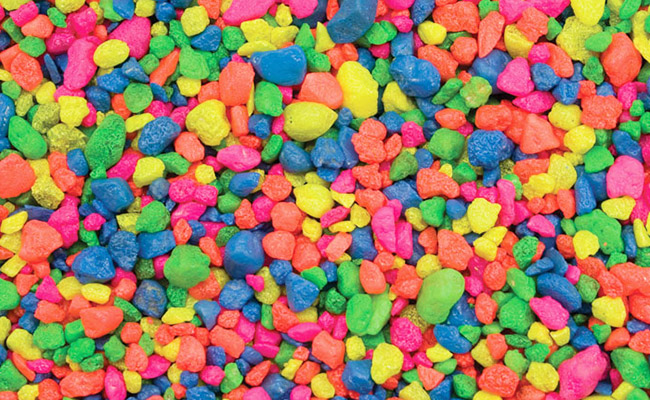
The debate as to which color substrate is best is older than the internet. Some claim that the color has no impact while others believe that it is best to imitate the fish’s natural environment.
At the end of the day, it all comes down to personal preference. If you want a bright pink substrate, then go for it.
Fish are adaptable as long as the water is good quality, the fish are well fed and the tank is maintained. So, color is not really an issue. Using the right type of substrate is much more important.
However, I personally prefer natural substrates. And the reason for this is that unusual colored substrates are a distraction – it’s much easier to focus on your fish without a bright-colored substrate catching your attention.
Bright-colored fish on a black or brown substrate really pop!
And besides, I just think natural aquariums look better overall.
How much substrate do you need?
The general recommendation is at least 3 inches. Not only will this amount be pleasing to look at, but it is also deep enough to allow plants to root without floating away.
While there is no upper limit to how much substrate you should use, there are some things to keep in.
1. The thicker the substrate, the less room there is for the fun stuff, like fish, decorations and plants.
2. There will come a time when you need to clean your substrate. And the more of it there is, the more you will have to clean.
And besides, thick substrates just look odd when viewed from the side.
The substrate does not have to be perfectly level. Instead, you can build up the substrate in specific areas of your tank. By making hills, mounds and slopes you create a unique and eye-catching aquarium. This is particularly common in aquascaping. It’s like landscaping, but for your aquarium.
Maintaining your Aquarium Substrate
Like everything else in your aquarium, your substrate requires tender loving care.
The amount of maintenance your substrate requires entirely depends on the material you choose.
Some substrates, like river rock, need to be washed before use to remove dust and dirt.
Other substrates, like gravel, need to be regularly vacuumed to remove dead plant matter, uneaten food and fish poop.
And then there are substrates that need to be replaced. Plants eventually deplete soil of its nutrients. When this happens, the old soil needs to be removed and replaced with new soil.
Familiarize yourself with the maintenance needs of your substrate before adding it to your aquarium.
Do you need a substrate?
I’ll be straight up. You don’t need a substrate. In fact, you can skip it entirely. An aquarium without any substrate is referred to as a bare bottom tank.
A bare bottom tank has pros and cons. For example, it limits the type of fish you can choose – any fish that hides in the substrate or scavenges through it for food is unsuitable for a bare bottom tank.
Also depending on what you intentions are for the particular tank in question, you may not want to even use a substrate. For example I have found over the years that in certain instances if you intend to try your hand at breeding certain fish, then some times no substrate is better and other times substrate is important.
So while most people go the substrate route, if you feel differently, then that is perfectly fine too!
Substrate and Plant Growth: What You Need to Know
You’ve probably seen lush, thriving aquatic plants and wondered, “What’s their secret?” Well, let me tell you, it often comes down to the substrate. You see, the right aquarium substrate can be a game-changer for plant growth in your tank.
Different types of aquarium substrate have varying impacts on plant health. For instance, substrates like aqua soil or nutrient-rich gravel provide essential minerals that boost plant growth. Think of these as superfoods for your underwater garden.
On the flip side, inert substrates like sand or plain gravel won’t offer much in the way of nutrients. But fear not! You can still have a stunning planted tank. Just remember to supplement with root tabs or liquid fertilizers. That way, you’re ensuring your green buddies get all they need to flourish.
And here’s a hot tip: If you’re setting up a new planted tank, investing in the best substrate for a freshwater aquarium can save you a lot of headaches down the line. Your plants will thank you with vibrant growth and vitality.
Common Substrate Mistakes and How to Avoid Them

Alright, let’s dive into some common substrate blunders. Trust me, I’ve learned these lessons the hard way, so you don’t have to!
- Going Too Deep or Too Shallow: This is a tricky one. Too much substrate can lead to dead spots and harmful gas buildup, while too little won’t support your plants properly. A sweet spot for most fish tank substrates is about 2-3 inches deep.
- Ignoring the Type of Substrate: Not all substrates are created equal. For a planted tank, the best substrate for an aquarium might be something like fluorite or eco-complete, which are nutrient-rich. But if you’re into cichlids, you might want something like aragonite to buffer the pH.
- Overlooking the Fish’s Needs: Remember, it’s not just about the plants. Some fish love digging in the sand, while others need smooth pebbles to feel at home. Always consider the needs of your aquatic pals when choosing your substrate.
- Neglecting Maintenance: Even the best substrate for an aquarium won’t clean itself. Regular vacuuming is crucial to prevent waste buildup and keep your tank healthy.
Conclusion
If you made it this far, then you should have good foundation to choose a substrate for your aquarium.
My biggest piece of advice is that the substrate should complement the rest of your aquarium, not work against it.
So, think hard about what you plan to keep in your aquarium before rushing out and buying the first bag of substrate you see. You’ll thank me when you are not swapping it out in three months because you made the wrong choice!
What substrate do you use in your aquarium? Let me know in the comments below.

Ian Sterling, founder of Fishlab.com, began his aquarium journey over 30 years ago, driven by a deep fascination for fish and their diverse personalities. His website, Fishlab.com, is dedicated to making fishkeeping accessible and enjoyable, offering beginner-friendly guidance, expert insights, and a community for aquarists to connect and share experiences.


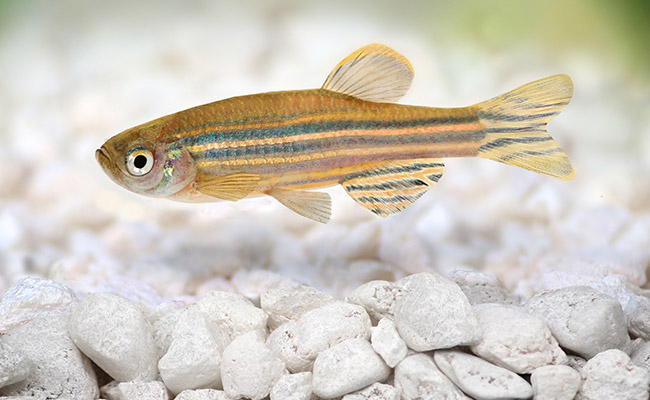
Comments (30)
I keep thinking this is a good idea. I live in Wyoming and have hard water. I want to continue with as many live plants as possible.
https://www.amazon.com/gp/product/B0002DH0QM/ref=ox_sc_sfl_title_42?ie=UTF8&psc=1&smid=ATVPDKIKX0DER
Hi Ainsly,
I agree, planted tanks do look beautiful. If you want a heavily planted tank then Aqua-soil makes a great substrate, providing nutrients to rooted plants.
I use gravel over sand because I keep a lot of live plants. I use peat in my filter (sunsun 304b) because natural water in Florida is hard with high Ph.
Hi Jeff,
Coming from Sarasota, I feel you on the hard water!
Do you use root tabs in your gravel substrate to provide nutrients to rooted plants?
Hi Ian,
One of the most helpful AQ pages so far… Amazing work…
I use tropica plant + base layer substrate with Co2 for my planted 40lt nano tank.
Ada colorado sand + root tabs (tropica) No Co2,for my another, planted, “but unsuccessful”, 10lt nano tank… i am having weird nitrate/nitrite peaks still dont understand how/why..
Best
Mert
Hi Mert,
Are you having nitrate spikes in both? If so, it’s basically trial and error removing each object you think is responsible for the cause, perform a water change and monitor the tank. Root tabs contain nitrate and if it’s not being consumed quickly enough by the plants can escape into the water column. With so many products containing different ingredients, narrowing it down is often a test of patience.
I will be keeping Cory’s in my aquarium. Am I correct that sand is a suitable substrate? Or can I use a small size gravel. I’m concerned for their barbels. In the past I have used gravel cleaners for my substrate. How would I maintain a clean substrate when using sand?
Hi Tom,
I would suggest a fine sand. You can modify a gravel vacuum by taping a chopstick or the prong of a plastic fork to the side of the gravel tube. This way the piece that protrudes out stirs your sand while the end of the gravel vac hovers above, removing any gunk that floats upwards. The exact length of the protrusion will depend on the weight and type of sand. Too close, and you’ll suck up sand. Too far away, and gunk will resettle. It’s a trial and error process but once you figure it out, you’ll never need to modify it again.
Ugh! We have the worst water ever; pH over 10 & super soft. Plus it has radium 224 & 226, with half-life of 3/6 days & 1600 years respectively, cyanide and too much copper & lots of sediment. Thank you Oil Well Frackers! My grandchildren recently got a beta & Marimo moss ball; I knew I had to have one. I just emptied the 45 gal tank of a mixed crushed limestone & decorative gravel because I could not keep the pH down in a safe range and it was getting spendy with the chems. Then I realized this substrate was for my cichlids many years ago.
We have 4 lovely goldfish we are growing for an outdoor pond. (I feed them a lot & they are growing very fast.)
The new substrate is a mixed size & color gravel, mostly 1-2 mm. I like it much better and I am sure the fish & “Sphere”, my moss ball will be much happier & healthier now. Thanks for the tip on not having all of the substrate level too. It looks stunning now!
Hi Karen,
Wow, I cannot begin to comprehend how difficult it must be for you with that water. I’m sorry to hear about the predicament, it’s horrible how fracking can destroy water supplies.
I love that you named your moss ball. That’s a trend I can get behind! Glad to hear you have had more success swapping the substrate out.
I have a 90 gal breeder that was set up with a light layer of river pebbles and artificial plants, as well as some real rocks and resin/plastic hidey holes — even some old fashioned PVC pipe for dodge-holes, some fairly large, and with air stones. It currently houses has 7 fairly large African mbuna, 2 pretty good sized Texas cichlid — who are currently shepherding an unexpected brood of babies — and a very large/old upside down catfish (who kills other scavengers on a regular basis though I keep trying pleco’s). Our water here is naturally pretty hard (>440 ppm CaCO3, no MgCO3) and the pH runs 8-8.5 — the African mbunas were accidental but seem to get along very well with the “limestone hard water”. I have been considering adding live plants, perhaps in some type of underwater pot so they can have growing substrate, but don’t know how to start. The river pebble bottom is an inch or thinner in most places; I guess I could make “hillocks” of plant growing material? Any thoughts or suggestions would be appreciated.
Hi Cara,
I’m not sure how coarse your substrate is but have you looked into root tabs or liquid fertilizer? Root Tabs are best for heavy root feeders. Simply poke them next to the plants roots and as they dissolve, they will give your plant a good feed. This way you can use the exact same substrate that you are already, without fiddling around with aquasoil.
I want some live plants in my 55 gallon tank I’m just beginning to set it up, is aqua soil expensive. Where can I buy it?
Hi Bobbie,
You should be able to pick up Aquasoil from your local fish store or even online. As for price, it’s comparative to that of other aquarium substrates. An alternative is to use a gravel or rock substrate and use root tabs to provide nutrients to your plants.
Hi I was wondering could you use root tabs and other types of plant fertilizer to keep soil in your aquarium without having to replace it?thanks
Hi Dani,
Yes, in the same way you could use root tabs and dosing ferts to grow plants in gravel, you could use them to grow in soil that is depleted of nutrients – keep in mind that your aquasoil may turn to mud over time
I currently have a gravel substrate and am thinking of adding Flourite soil! Is this practical?
Hi Anton,
Because your gravel is already inside the tank, any extra substrate added is going to add thickness, giving you and your fish less room inside the tank. f you want to add aquasoil for growing plants, root tabs are an alternative option, allowing you to keep your existing gravel while providing nutritents to plants.
200 gallons Tank with arowanas, gars, fire eel & tyre track eel. Present setup with white subway tiles base. What substrate do you recommend? Thanks & regards.
Hi Wahid,
It’s entirely up to you. Arowanas stick to the top portion of your tank and won’t mind. Your eels on the other hand might have a preferred type of substrate. If I remember correctly, fire eels burrow in the substrate, so a soft sand might be a better option?
Thanks for the reply.
i added soil and then sand sunstrate why is my water stayung brown during cycling. Do i need to add more sandon top?
Hi Jacy, did you wash your sand?
Filter floss (50um) will help remove the free floating stuff. YOu may need to go through a few before it clears, but you can buy a slab for cheap online and cut it to size to fit your filter.
I decided to get into dirted tanks at the exact wrong time. Miracle Grow has discontinued their Organic potting mix recommended by Diane Walstad and the leading dirt used by most major dirt tankers. I ask what to use and they say any old dirt will work. So not my experience. I’ve picked up Dynadirt which is used in ponds. 75% peat and 25% sand. I have red clay and crushed oyster shells as additives. Should I add plain top soil, some kind of organic fert like chicken litter that MG organic was famed for or dolomite. Dynadirt does have limestone which seems to be the only additive. I’ve gone blind looking at ingredients and believe me when I say 99% have perlite and explosive fertz which i have been warned against. Any help would be greatly appreciated by my family who are about to have me checked into an asylum for my dirt obsession.
Hi Marie.
It’s been some time since I set up a tank using the Walstad method, so I must admit I’m a little out of the loop on this one. I think this is probably a question better asked over at theplantedtank.net – It’s highly likely someone will be able to give an exact “dirt recipe” that they have succesfully used in place of Miracle Grow’s organic potting mix.
My 55 aquarium was a goldfish resort, but times change and the tank is now a mollie retreat. I want to change the aquascape to plants, and a backdrop that hides the hob filter intakes, and heater. I am going to remove the gravel and UGF – accompanying powerheads and replace those items with four sacks of CaribSea Eco-Complete black plant substrate. Without vacating the inhabitants. Because the mollies prefer a slightly elevated ph, I am thinking that it would be wise to also use one sack of their Cichlid mix in to help with any ph drop or drift. Do you think this is a good idea? If so, would you use only one bag or more than that? The bimodal grading of these products means that it separates into strata of different sized aggregate. I ask as I am wondering if there is a need to cover with sand or small-sized gravel? If so, how much?
Hi Christopher,
Unfortunately, it’s difficult to say how much you will need. It will vary according to their mix (which can fluctuate) your water ph and the hardness. Like with any product you are unfamiliar with, I would add a single bag first then monitor it. I understand this may be difficult since you want to do the change in a single sitting, but fishkeeping really is a lesson in patience.
Unless you have fish that bury themselves in the substrate, or fish with sensitive barbells, there isn’t a need to cap the mix. Although there is no harm if you want to for aesthetics.
Hi I’m getting a 50 litre tank it is 37h x 33w x 62 d just wondering how much substrate I will need
Hi Jason,
Substrate is typically between 2 and 3 inches, depending on the look you want. From here it should be a simple equation, (l x w x d of substrate)
50L is around 11 gallons and if you use gravel/pebbles 1 pound per gallon is enough so you’ll need around 11 pounds of gravel maybe more and if u use sand, 1.5-2 pounds per gallon is more suitable